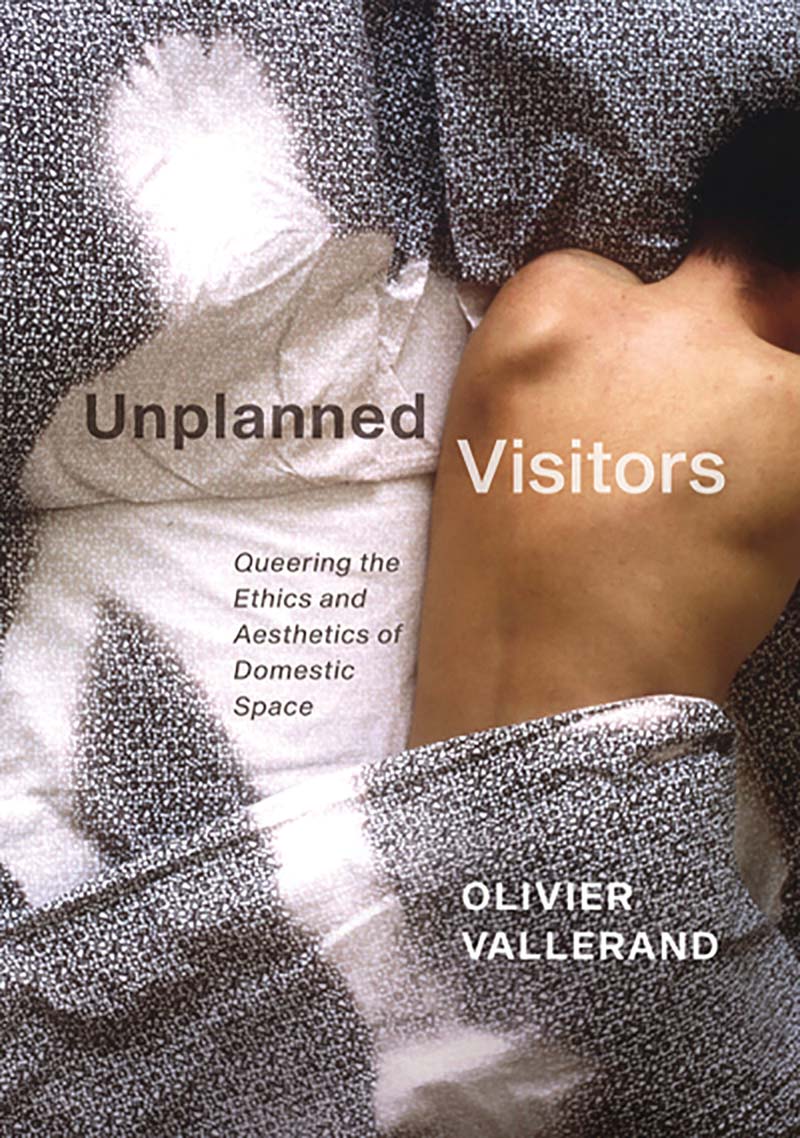Book Review: Unplanned Visitors—Queering the Ethics and Aesthetics of Domestic Space
Olivier Vallerand—a design educator, researcher and writer—challenges the way that gender stereotypes influence design, especially in the assumptions behind domestic space.
 By Olivier Vallerand (McGill – Queens University Press, 2020)
By Olivier Vallerand (McGill – Queens University Press, 2020)
REVIEW Maya Orzechowska
“Gender and sexuality’s influence on the design and use of a space are not essentializing characteristics,” writes Olivier Vallerand, “but two of the multiple lenses through which individuals might understand and navigate the world.” In Unplanned Visitors, Vallerand—a design educator, researcher and writer—challenges the way that gender stereotypes influence design, especially in the assumptions behind domestic space. His open-ended and inspiring case studies provide alternative paths for future architecture.
Vallerand weaves together a history of queer critiques, an exploration of their close and foundational relationship with feminist perspectives, and contemporary examples from art, spatial interventions, and architecture. The rich mix includes projects and ideas by Mark Robbins, John Paul Ricco, Joel Sanders, J Mayer H, Elmgreen & Dragset, Andrés Jaque, QSPACE, and MYCKET. The projects range from timely themes of home and identification, to the integration of work and home, to a model for networks of care in collective housing designed to benefit a more active, engaged, supported and dignified aging process. While architects may assume that the home is an intensely private domain, the examples make it evident that architecture is always political, and shaping more integrated domestic spaces is a political act.
Queer perspectives—and with these, racialized, less affluent, elderly, female, and trans voices, among others—are often silenced in the architectural canon, education and practice. Yet the book exposes how greater consideration as to these voices and users, along with space that is hospitable to a more diverse range of inhabitants, provides opportunities to better reflect societal diversity. The engaging, aspirational examples also reveal how, beyond the home, inclusive design approaches can become catalysts for meaningful changes to the binary conventions of public and private in spatial design. Strategies for changing the status quo include blurring, layering, and rethinking separations between public and private.
As Vallerand explains, “Using these [outdated constructs of public and private as] oppositions to understand spaces prevents transformation of design paradigms that could improve the well-being of many people who do not—or cannot—correspond to the typical user targeted by normative designs.” He writes, “The research project at the heart of this book thus seeks to assert the potential of a queer perspective on architectural design history, theory and education: a politically responsible approach that can create more inclusive, more integrated, and safer buildings and neighbourhoods for everyone.”
Maya Orzechowska is a Toronto-based architectural designer and an instructor at Toronto Metropolitan University. Her research work on homes gives centrality to issues of vulnerability, emotional health, empathy and resource sharing.
